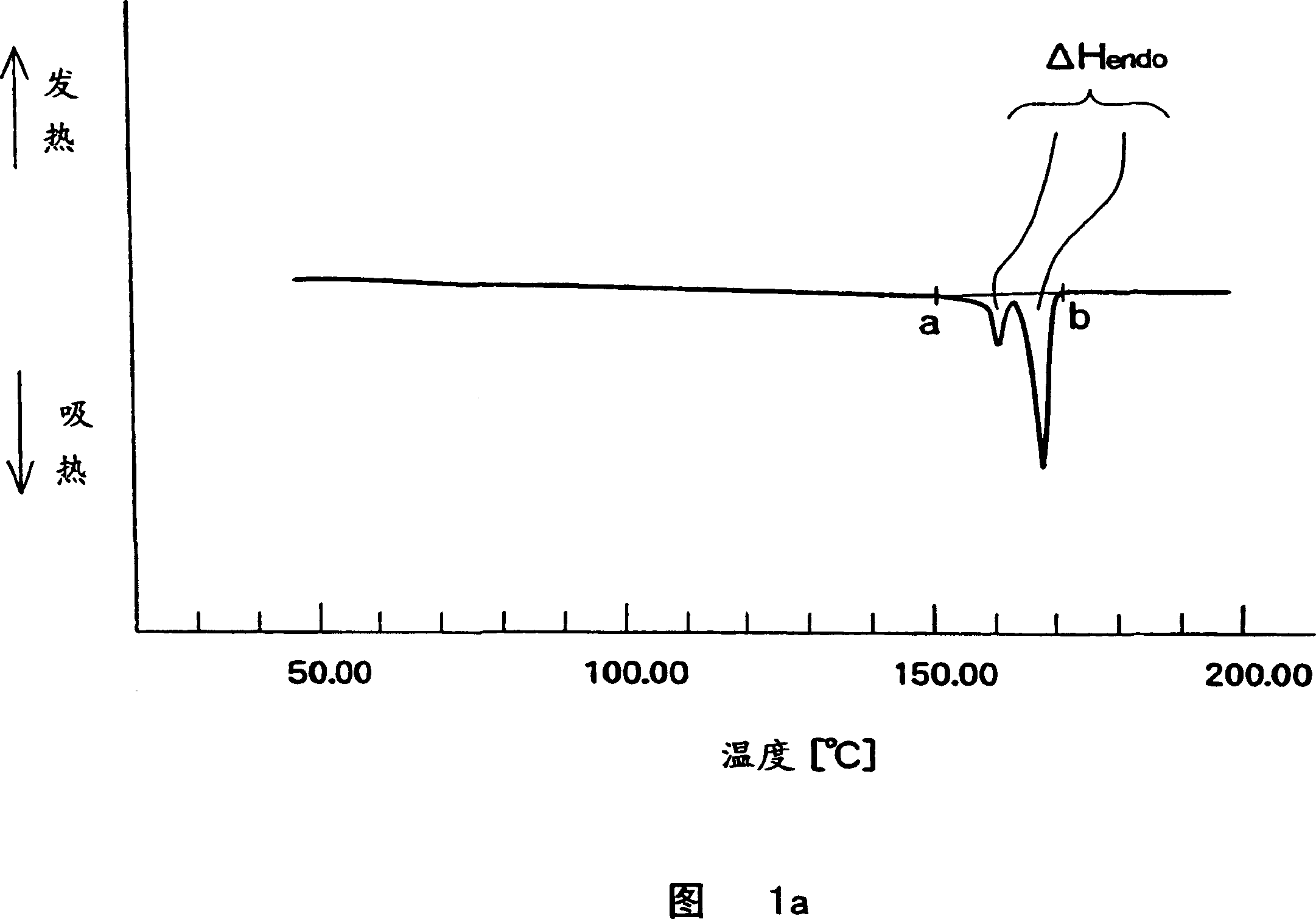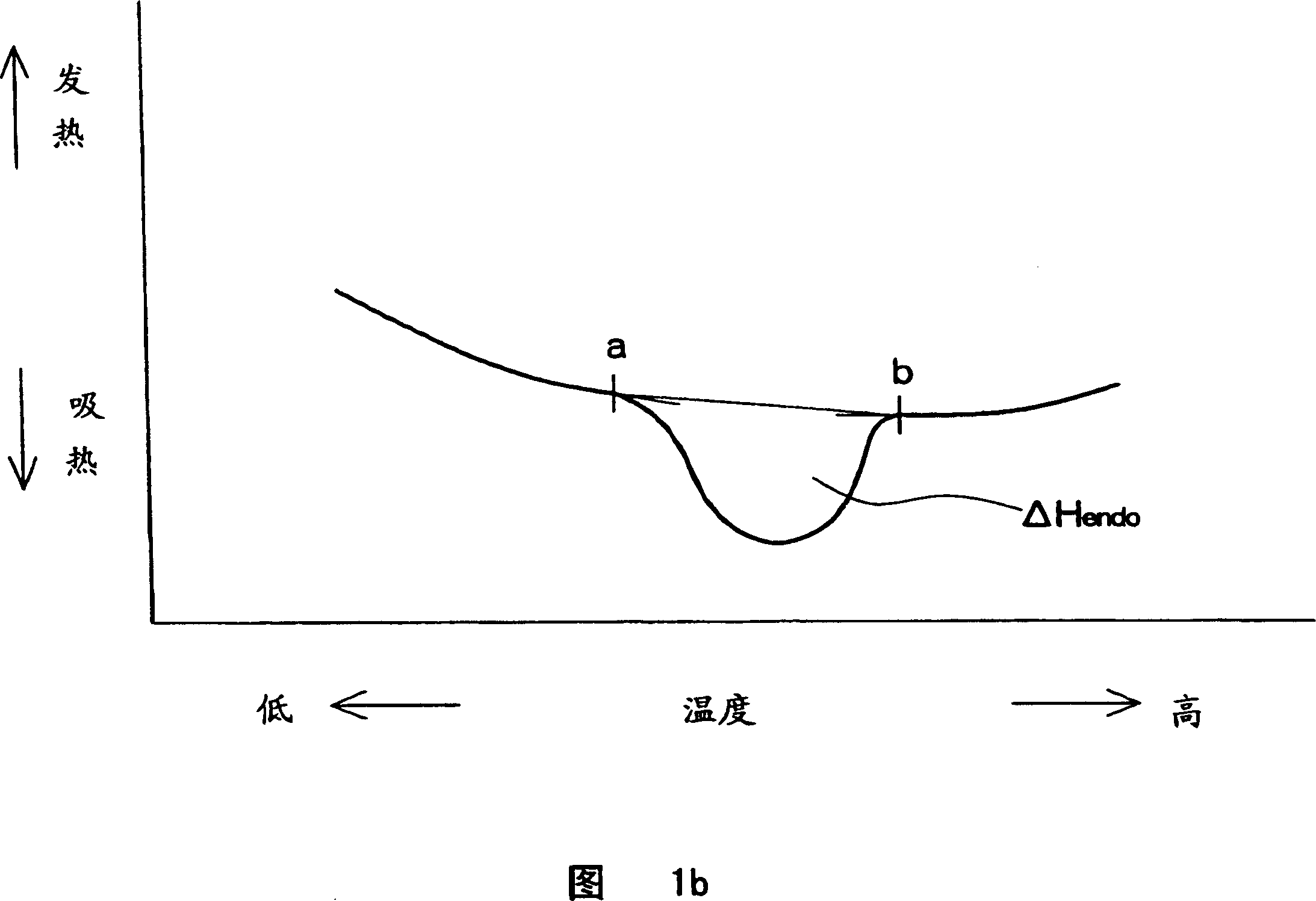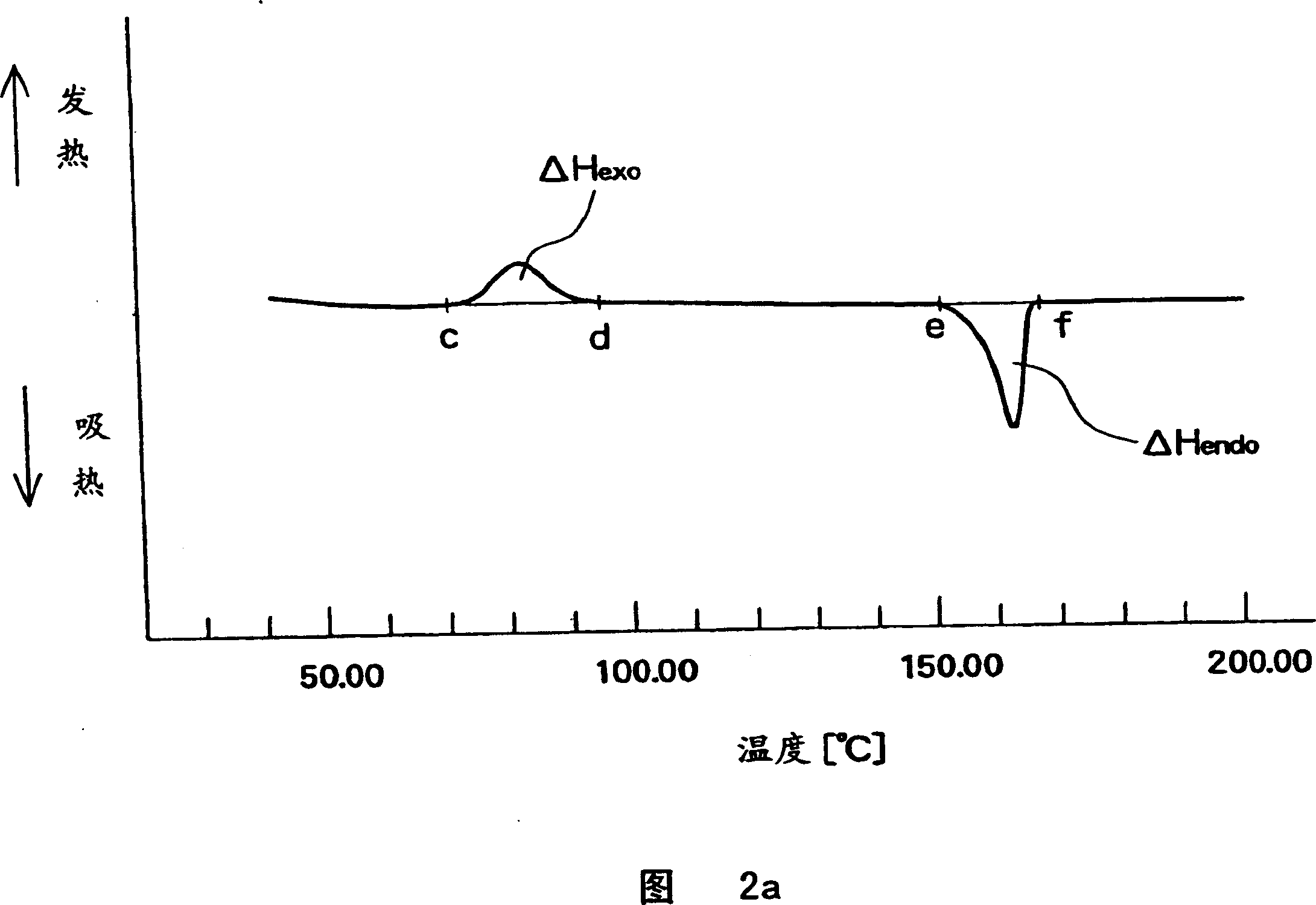Polylactic acid foamed particle and molded product of the polylactic acid foamed particle
A technology of polylactic acid resin and foam particles, which is applied in the field of polylactic acid resin foam particle moldings, and can solve the problems of foam particle fusion adhesion, insufficient dimensional stability, large density dispersion, and poor mechanical properties
- Summary
- Abstract
- Description
- Claims
- Application Information
AI Technical Summary
Problems solved by technology
Method used
Image
Examples
Embodiment 1~6、 comparative example 1~4
[0092] The heat absorption (ΔH endo:Material ) is 37J / g of crystalline polylactic acid resin (manufactured by Shimadzu Corporation, ラクライ9030) and the heat absorption (ΔH endo:Material ) is 0J / g non-crystalline polylactic acid resin (manufactured by Shimadzu Corporation, ラクライ9800) according to the mixing ratio (weight ratio) shown in Table 1 and mixed, the blend and talc in the extruder After medium melting and kneading, extrude in the form of strands, and then quench and solidify the strands in water at about 25° C., then cut to obtain cylindrical resin particles with a diameter of about 1.3 mm, a length of about 1.9 mm, and each about 3 mg. In addition, the amount of talc added to the resin particles was 2000 ppm.
[0093] Then, the inside of an airtight container having an internal volume of 5 L was adjusted to the immersion temperature shown in Table 1, and 1000 g of the above-mentioned resin particles were put into the container. carbon dioxide (CO 2 ) is pressed into t...
Embodiment 7
[0100] The heat absorption (ΔH endo:Material ) is 49J / g of crystalline polylactic acid resin (produced by Mitsui Chemicals Co., Ltd., レイシアH-100) and the heat absorption (ΔH endo:Material ) is 0 J / g non-crystalline polylactic acid resin (Mitsui Chemicals Co., Ltd., Leysia H-280) was mixed at the mixing ratio (weight ratio %) shown in Table 3, and talc was added to the mixture to make it The blending amount was 2000 ppm, and these were melt-kneaded in an extruder, and then extruded in a linear form. Next, the wire was rapidly cooled and solidified in water at about 25° C., and then cut to obtain cylindrical resin particles with a resin particle length (L) to diameter (D) ratio (L / D) of 1.5 and about 3 mg per one.
[0101] In addition to making CO 2 Except for the immersion conditions shown in Table 3, expandable resin particles were prepared from the obtained resin particles in the same manner as in Example 1.
[0102] Next, after filling the expandable resin particles in an ...
Embodiment 8
[0105] In a closed container with a capacity of 5L, add 1000g of resin particles made by the same method as in Example 7 and 3L of water as a dispersion medium, then carbon dioxide (CO 2 ) is pressed into the airtight container, and the CO in the airtight container 2 The pressure was adjusted to the pressure shown in Table 3, and the dispersion medium was stirred while being maintained under the immersion conditions shown in Table 3. Next, after the pressure in the airtight container was brought to atmospheric pressure, the expandable resin particles into which carbon dioxide had been impregnated were taken out together with the dispersion medium.
[0106] Then, after filling the expandable resin particles in an airtight container provided with a pressure regulating valve, introduce 0.05MPa(G) (65°C) steam for 5 seconds and heat to foam the resin particles to obtain a non-crosslinked foam particles. The properties of the foam particles are shown in Table 3.
[0107] Then, t...
PUM
| Property | Measurement | Unit |
|---|---|---|
| density | aaaaa | aaaaa |
| density | aaaaa | aaaaa |
| heat | aaaaa | aaaaa |
Abstract
Description
Claims
Application Information
 Login to View More
Login to View More - R&D
- Intellectual Property
- Life Sciences
- Materials
- Tech Scout
- Unparalleled Data Quality
- Higher Quality Content
- 60% Fewer Hallucinations
Browse by: Latest US Patents, China's latest patents, Technical Efficacy Thesaurus, Application Domain, Technology Topic, Popular Technical Reports.
© 2025 PatSnap. All rights reserved.Legal|Privacy policy|Modern Slavery Act Transparency Statement|Sitemap|About US| Contact US: help@patsnap.com



